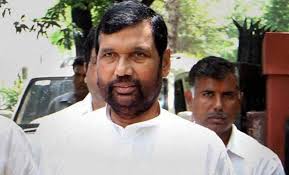New Delhi, Feb 24: Congress today termed as "purely speculative" reports that LJP could ally with BJP for the Lok Sabha polls, noting that Ram Vilas Paswan was the first one to quit the NDA on the issue of Gujarat riots.
"If at all there is anything that is playing out in the public space, my instant reaction would be that it is completely and purely speculative," Union Minister Manish Tewari said.
Referring to Paswan, Tewari said the person who chose to walk out of a government on the question of Gujarat riots would find it hard to take a U-turn on that position considering that issues arising out of the incidents of 2002 continue to remain unaddressed, especially the question of justice for the victims.
Tewari said Paswan had chosen to walk out when a large number of other people with similar apprehensions had chosen to stay with the NDA.
Paswan's party had been an alliance partner of NDA government but the LJP chief was the first to quit the BJP-led alliance in 2002 post-Godhra riots when Narendra Modi was the Chief Minister of Gujarat.
A senior leader from Paswan's Lok Janshakti Party had yesterday said that his party has decided to go with BJP in the next Lok Sabha polls.
After a meeting of LJP leaders at Paswan's residence here, former MP and party leader Surajbhan Singh had, "Alliance between LJP and BJP has been finalised."
However, LJP secretary general Abdul Khalik had told PTI that no final decision has been taken, and only parliamentary board of LJP can decide it.
To a question related to Devyani Khobragade, the Information and Broadcasting Minister said the manner in which authorities in the US had behaved with a lady diplomat was uncalled for.
"Once the question of immunity has been settled, I think the logical thing for the US government to do would be to withdraw the case which has been filed against her," Tewari said.





Comments
Add new comment